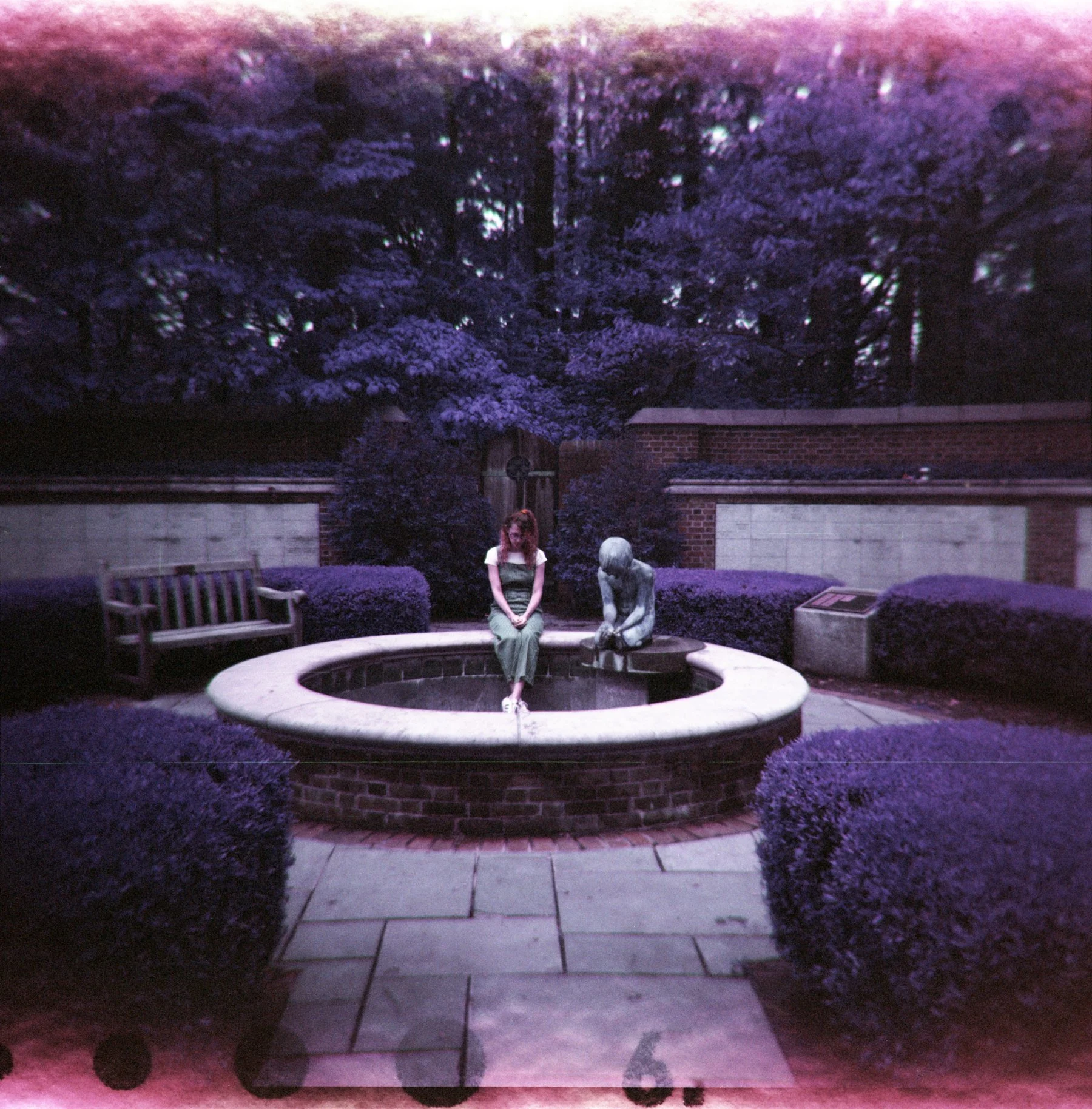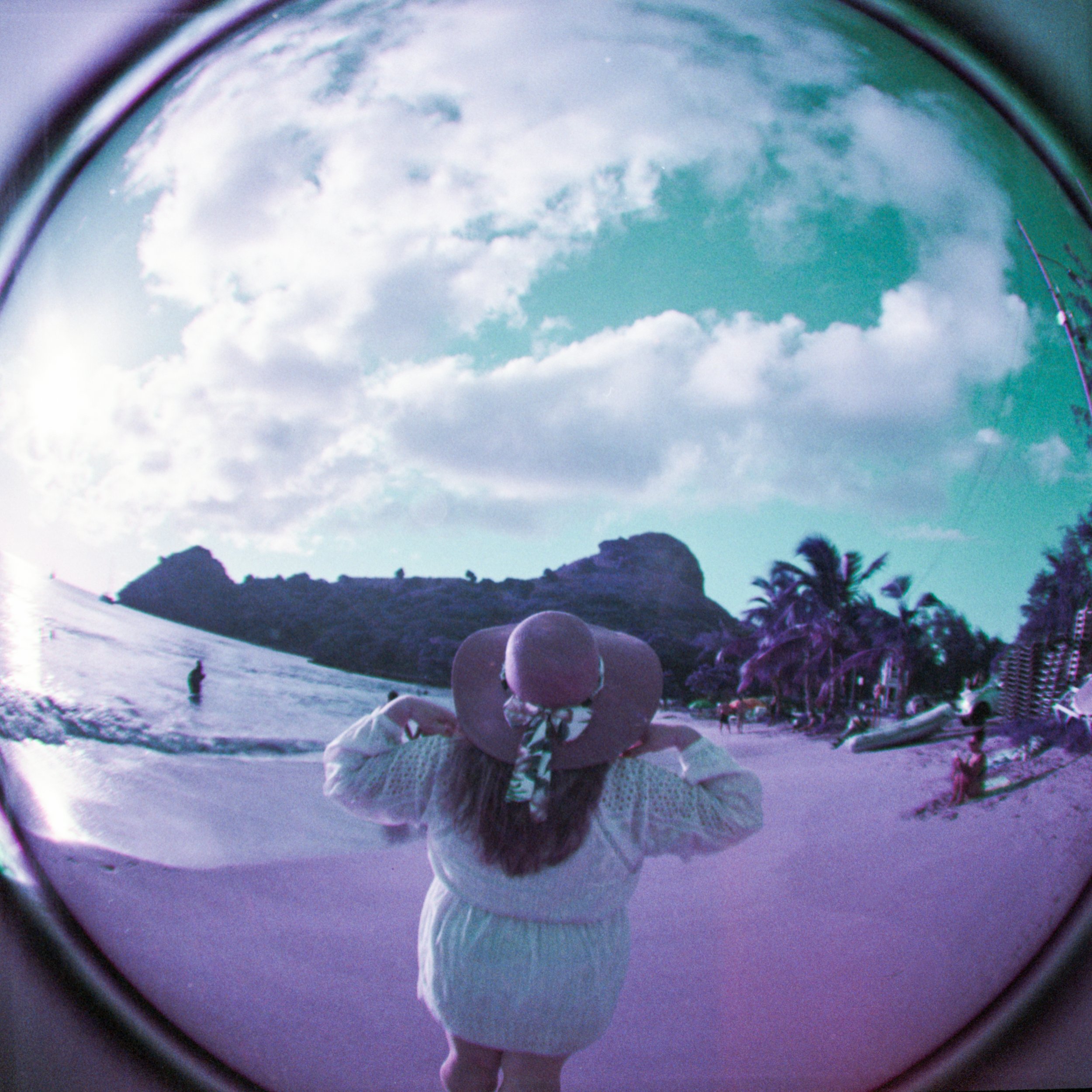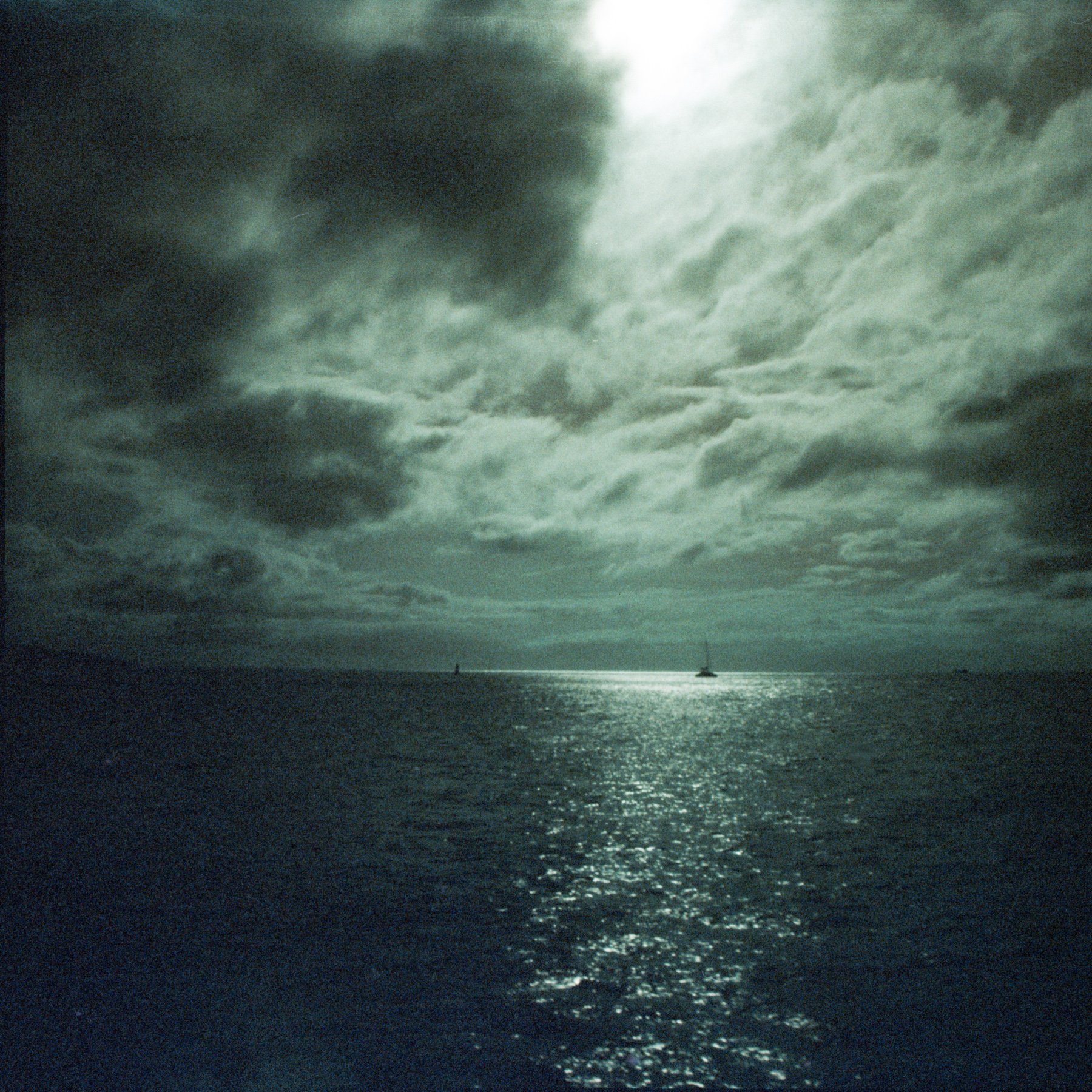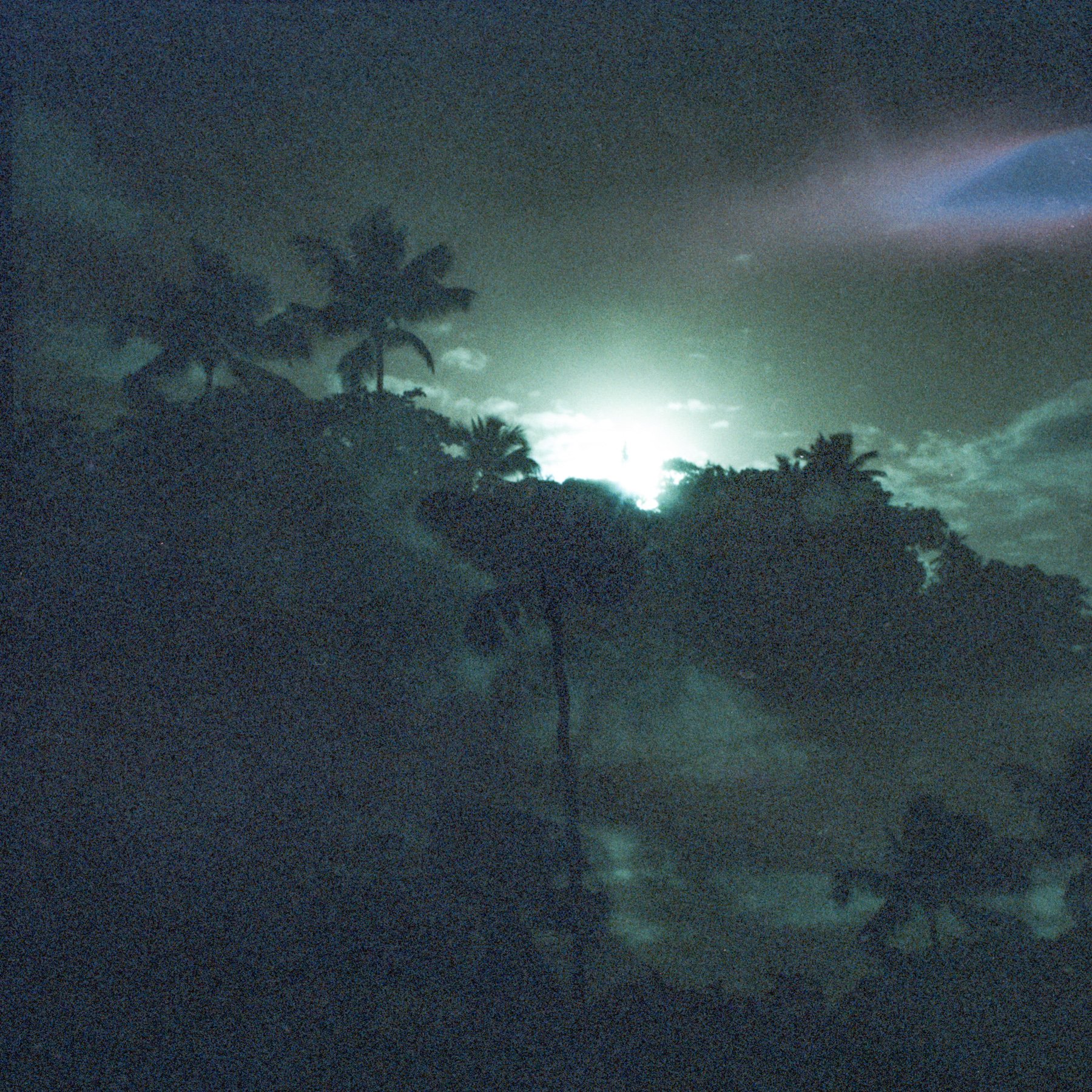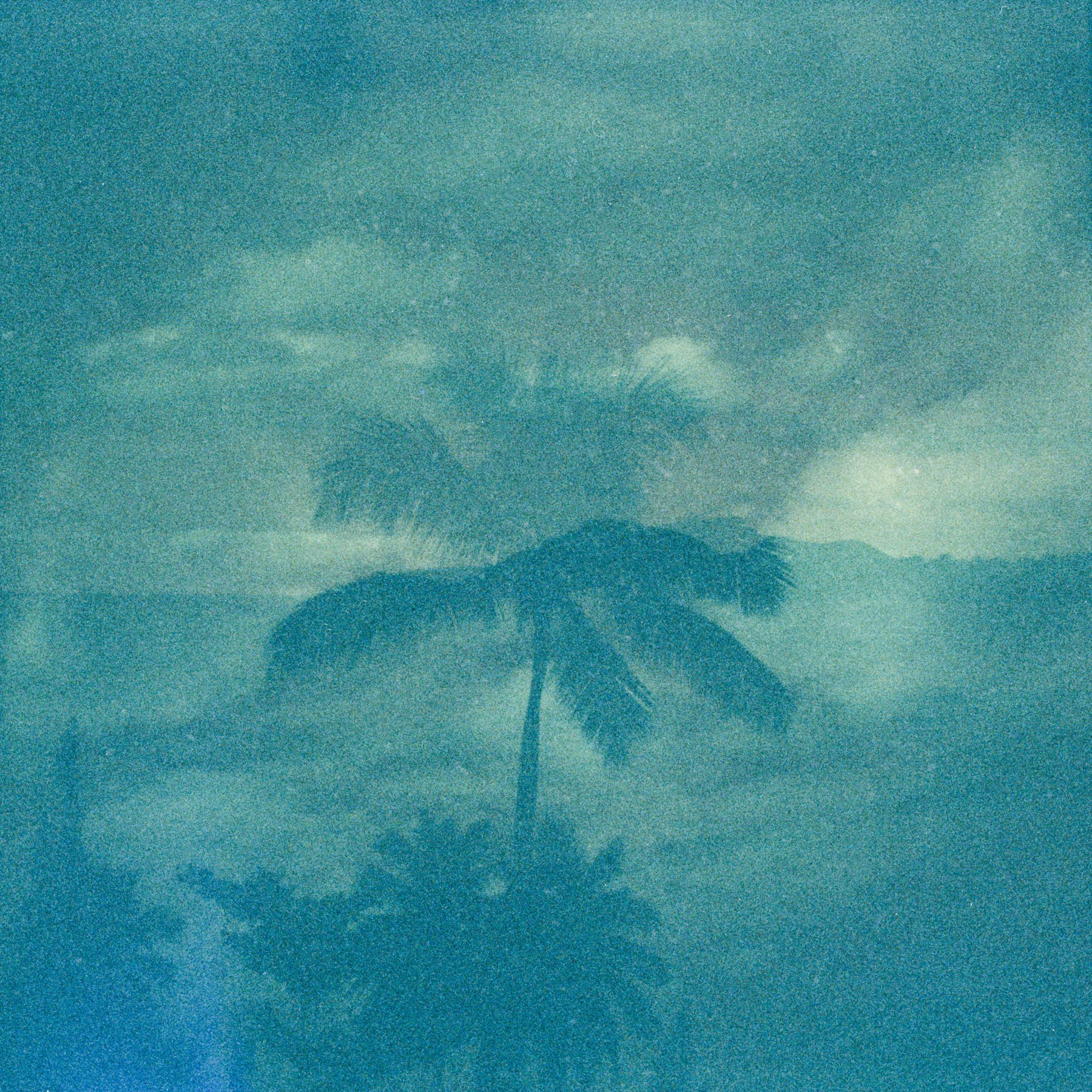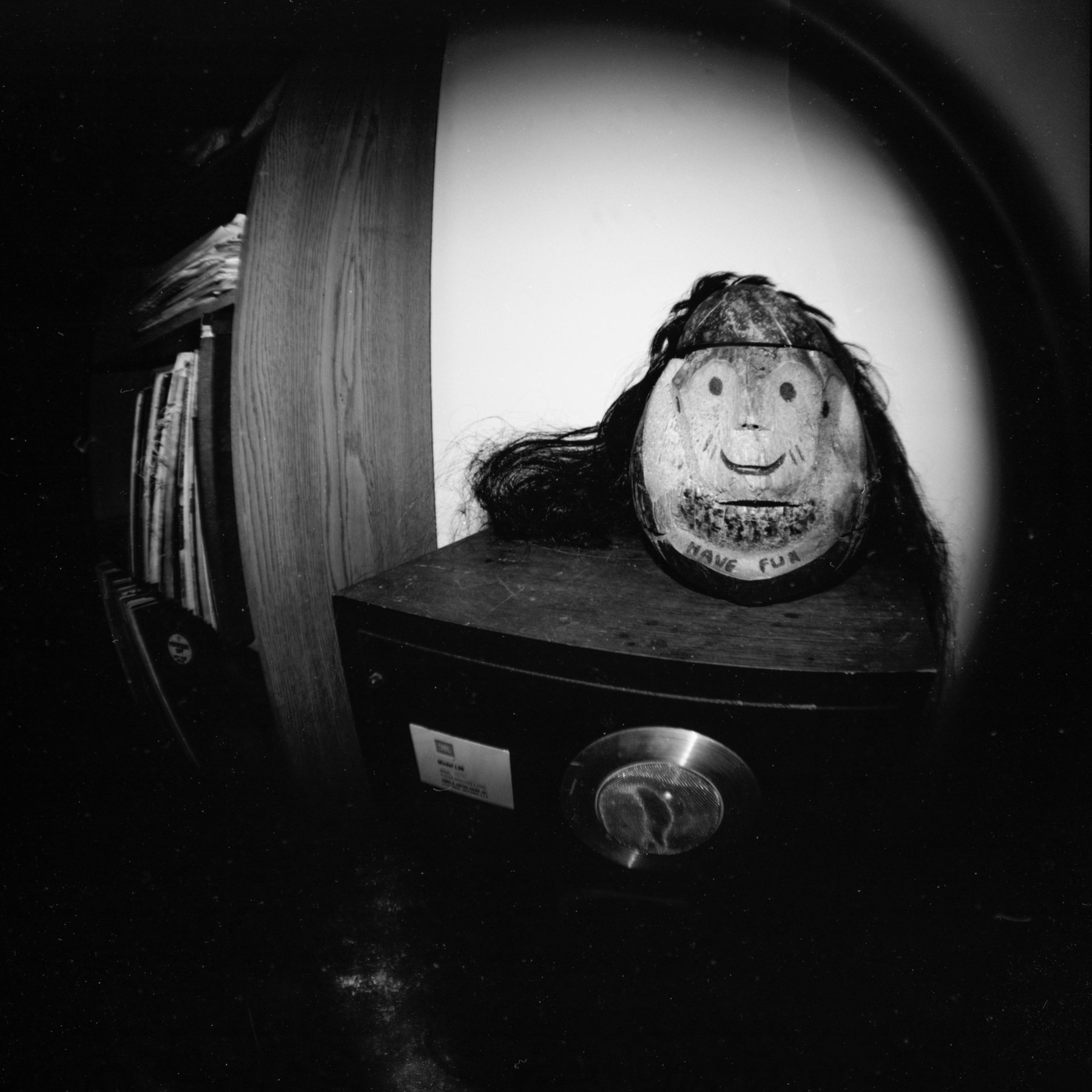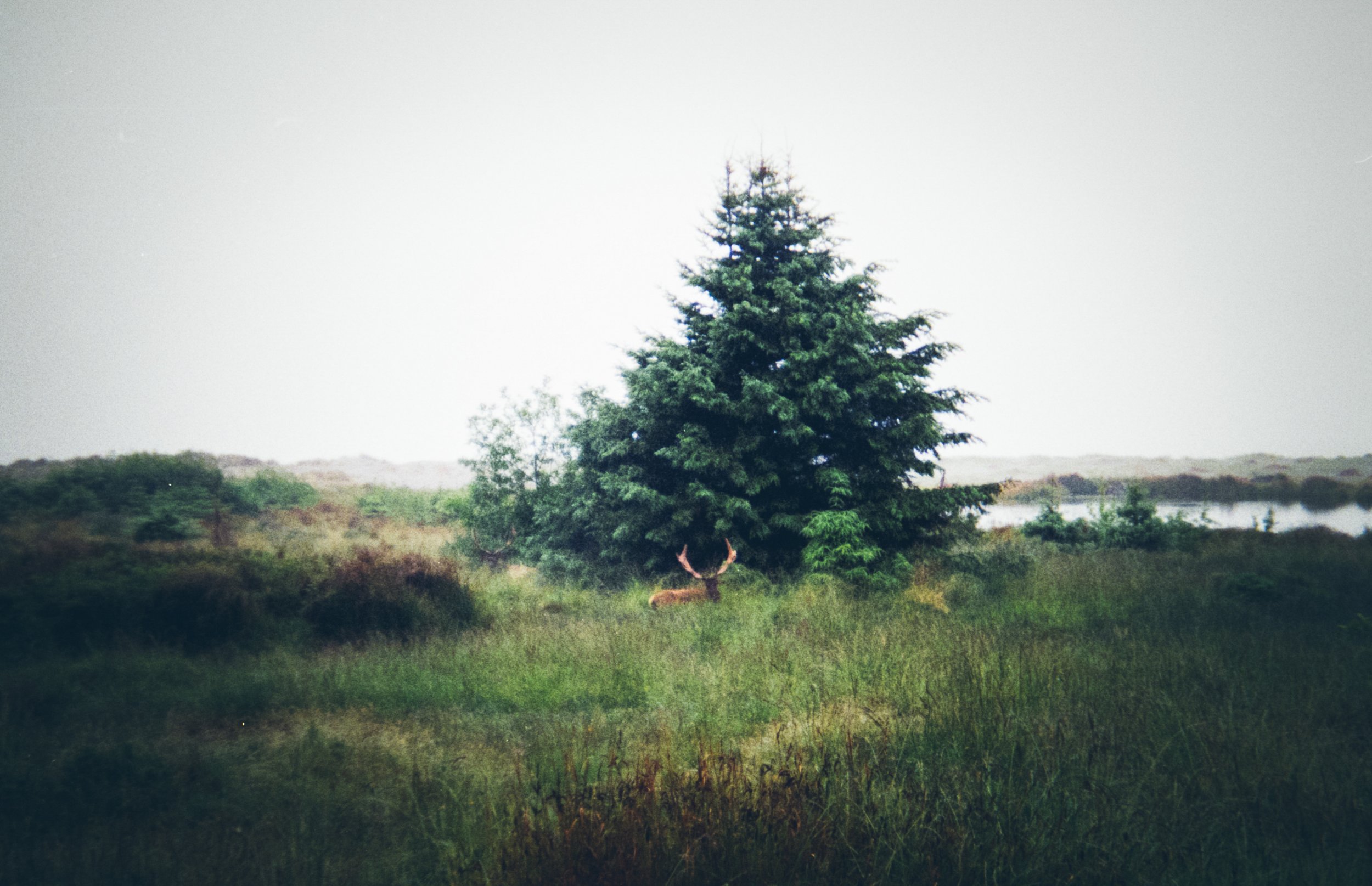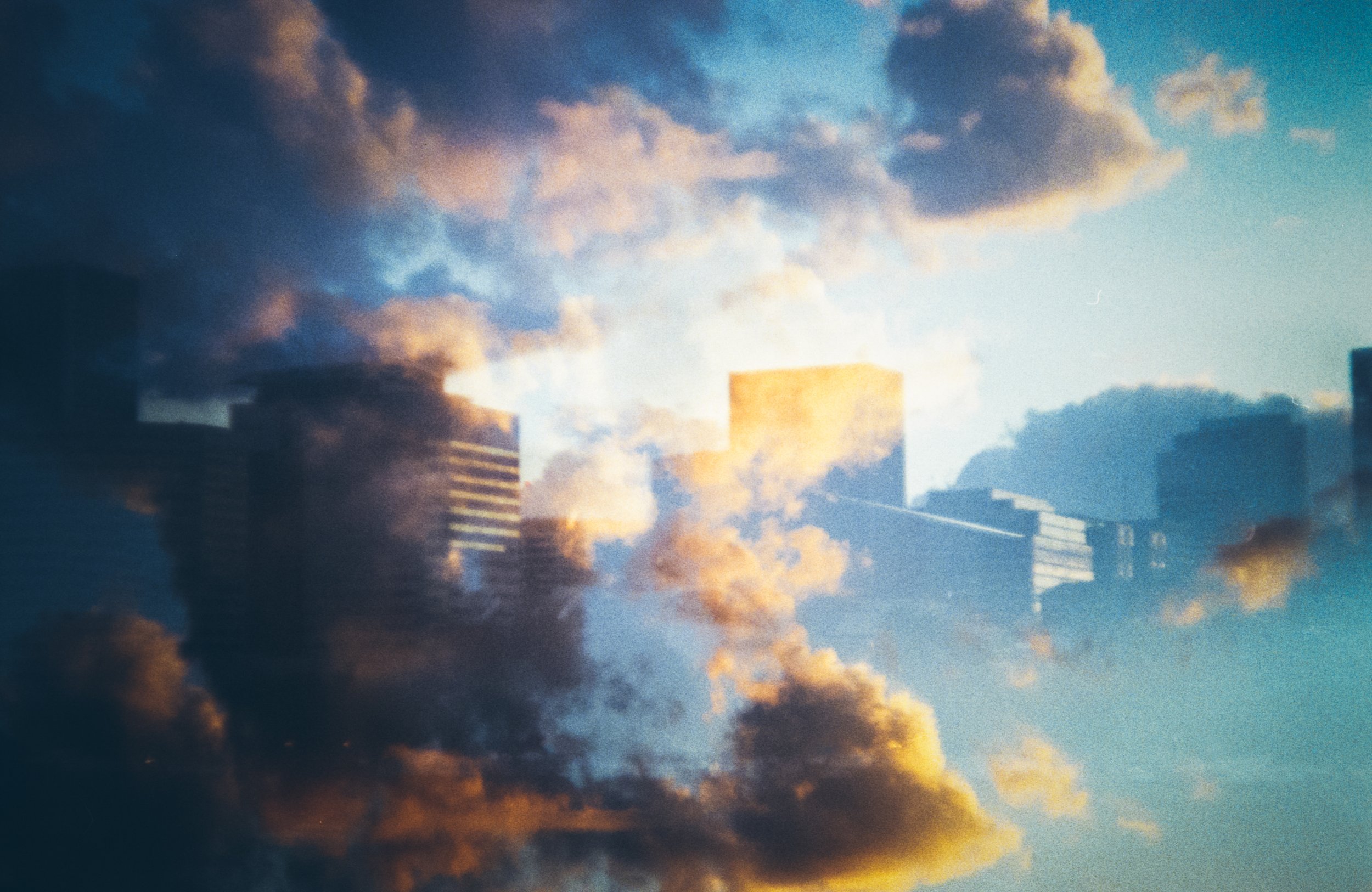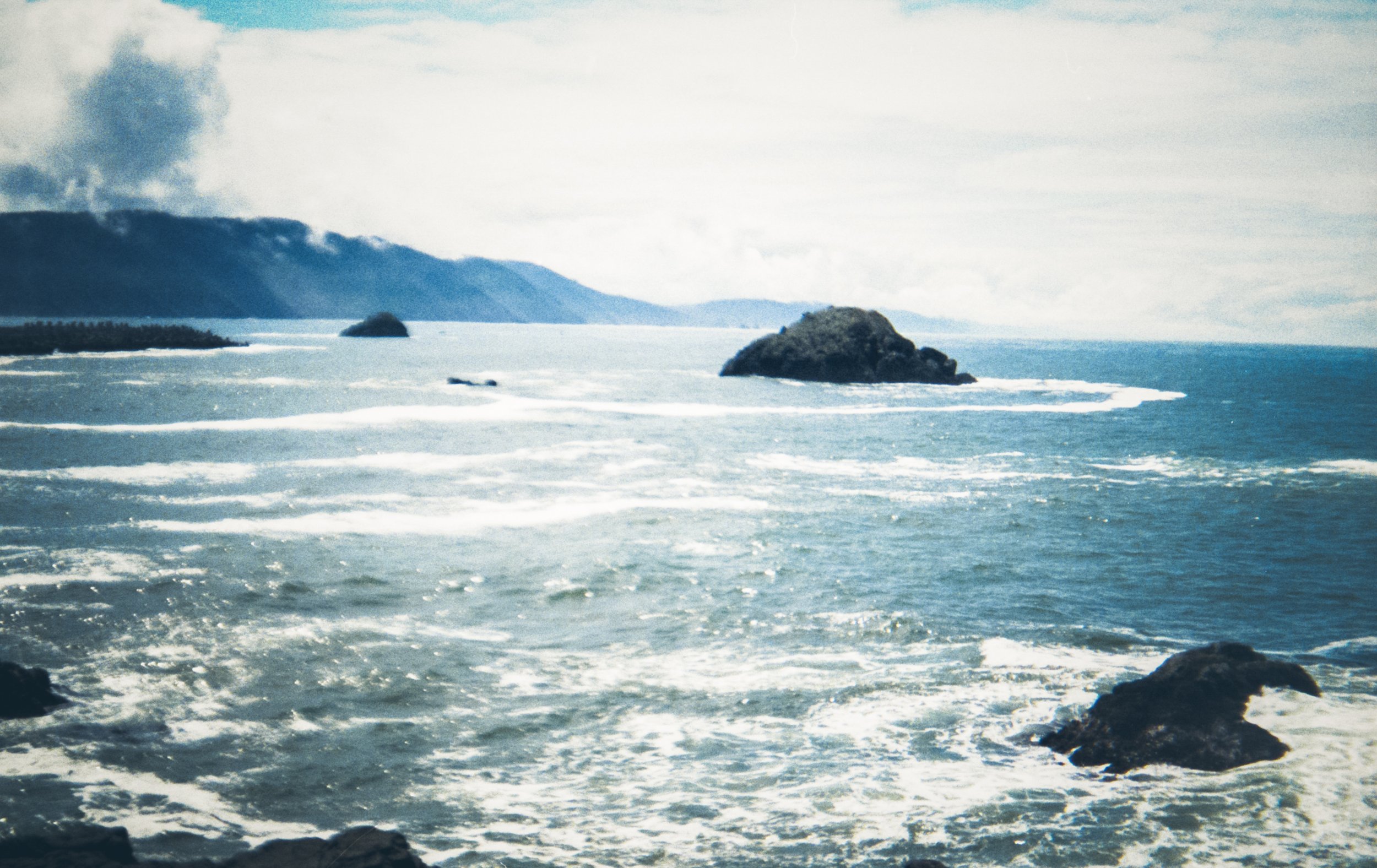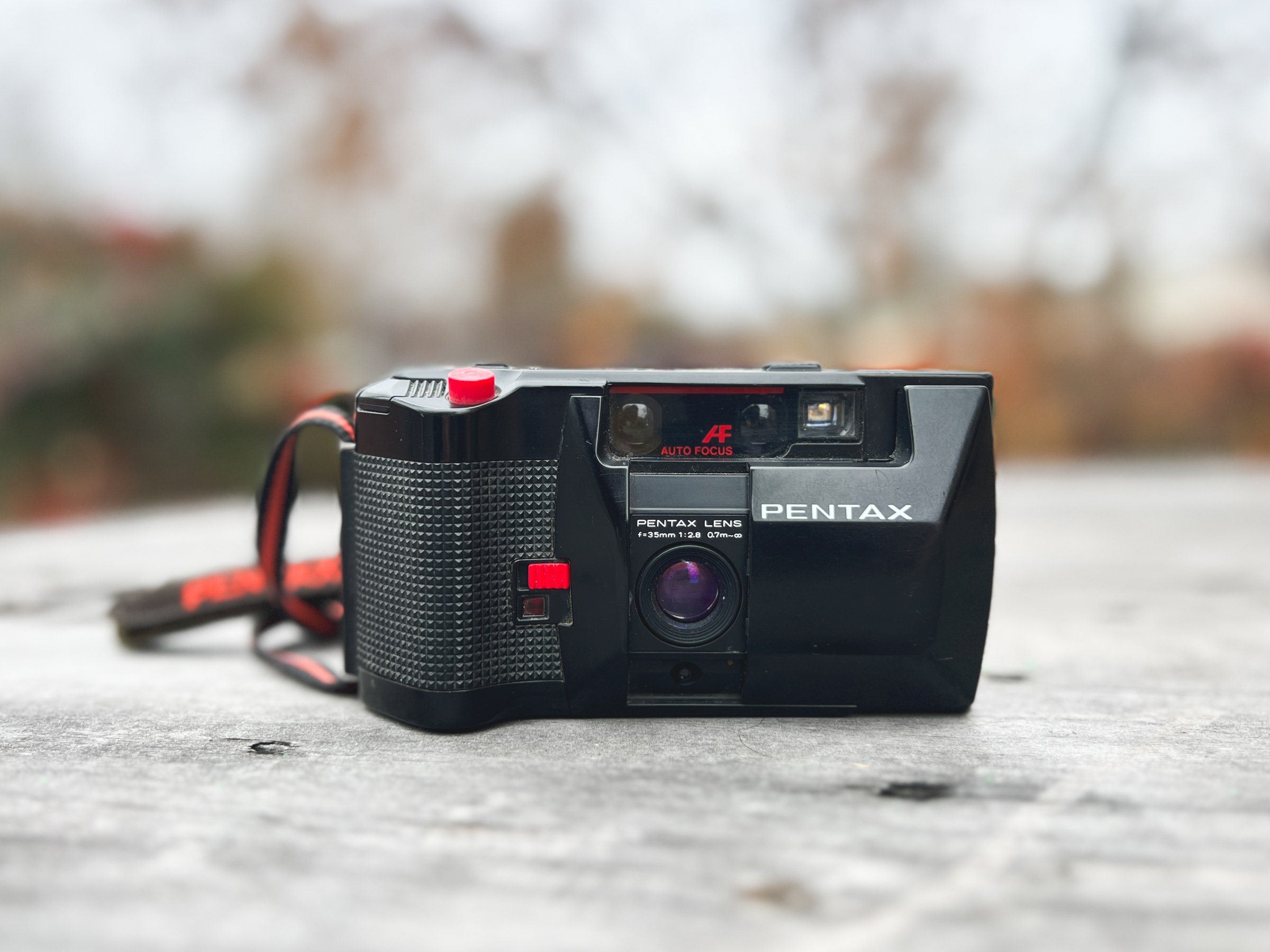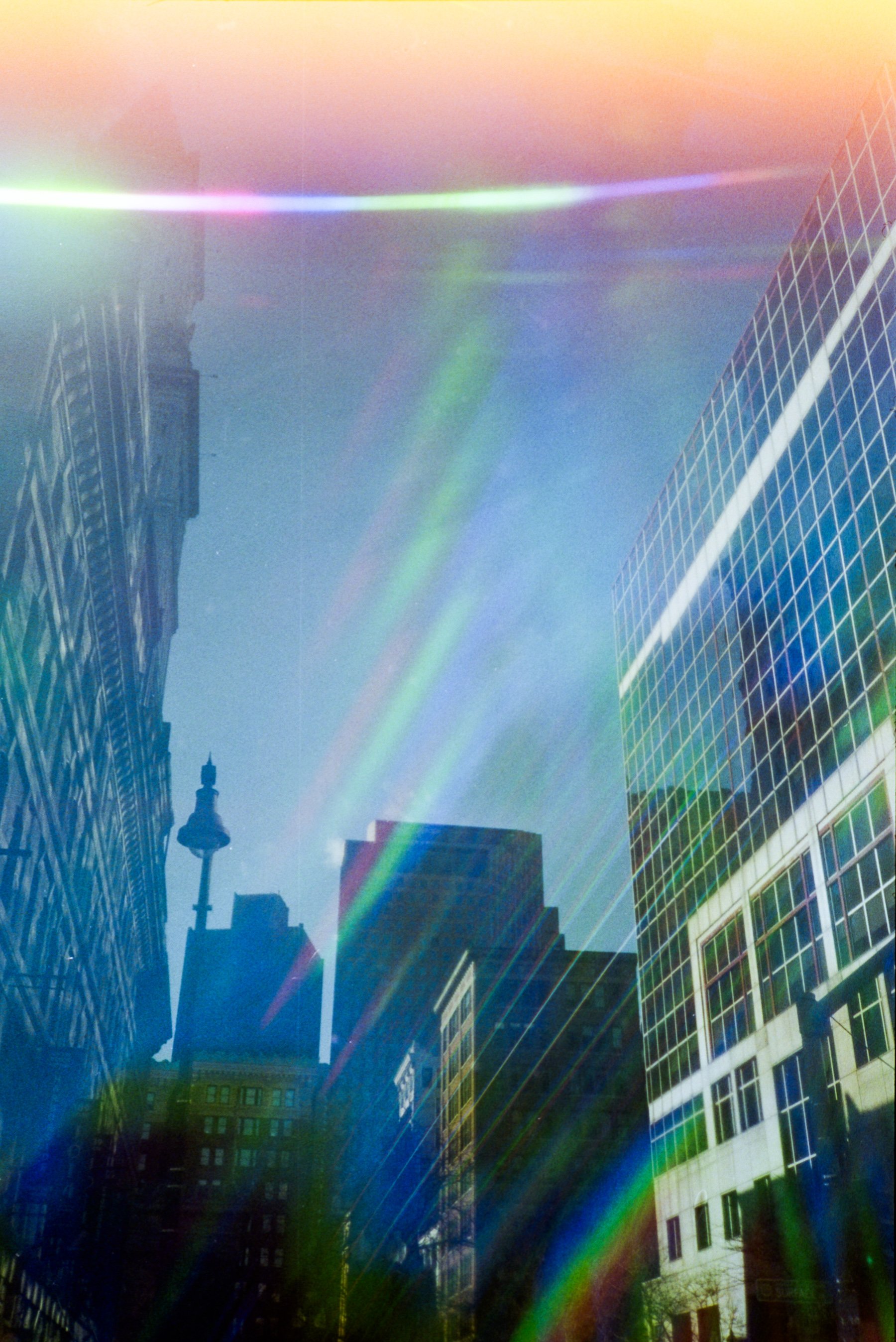To be honest, I have no idea where my Pentax PC35AF-M came from. It just showed up in my camera collection one day. I think I might have picked it up in a thrift store but I’m not sure! For years, I kind of skipped over it, choosing other cameras instead when I’d pack my camera bag. Recently, I was cleaning out my office and stumbled across it again. When I opened the lens cover, I realized the lens was a 2.8F lens. It made me wonder why I hadn’t given this camera a chance yet! So I loaded it up with a roll of 35mm film and took it with me on a recent trip to Boston & Salem, Massachusetts. I even took it with me to a few fashion shoots I had in Portland, Oregon but somehow I lost that roll of film. I’m pretty devastated about that because I’ve never lost a roll of film. Maybe I’ll come across it one of these days. Or maybe I somehow shot over it and will end up with a roll of double exposures. I sure hope so!
A BRIEF HISTORY OF THE PENTAX PC35AF-M
The Pentax PC35AF-M is a 35mm point and shoot autofocus compact camera produced by Asahi Optical Corporation in Japan. It was originally released in 1984, which doesn’t sound that old for a vintage camera, but these days that means it’s 40 years old! In my opinion, they seem to hold up very nicely because of their solid build. The PC35AF-M was a follow-up to the original version of the camera, the Pentax PC35AF. The only difference was a motorized film-advance. The PC35AF was Pentax’s first autofocus compact camera, which is pretty amazing considering how well these little cameras have held up.
INITIAL THOUGHTS
So far, I’m pretty impressed with this camera. It doesn’t look like much but it seems to be becoming a bit of a cult classic in the camera community. It’s still relatively affordable though ($50-200) and I’d recommend scooping one up while you can. You can find them on eBay and places like Mercari. The lens is incredibly sharp for the price and it has quite a heavy, sturdy body for its size. I think this camera still flies under the radar though and I’ve heard of people picking them up in thrift stores for next to nothing. Hopefully you’ll be one of the lucky ones that finds one this way!
FEATURES
If you’re a fan of compact, easy-to-use 35mm point and shoot cameras, this one definitely won’t disappoint. The shutter button makes a strangely satisfying electronic sound and the photos are quite sharp for the price point of this camera. The autofocus system is different than others when it comes to point and shoots, in that you have a bit more control over the subject distance. If you partially depress the shutter button, it shows you in the viewfinder which subject distance it’s choosing. If you decide to change subjects, you can remove your finger from the shutter and redepress the button for the new focusing distance.
I love that is has a pop-up flash. There’s a fun little red button on the side that you pull down and the flash just shoots right up! It gives you a bit more control over the flash, rather than it just popping up on its own when you’re in a low light situation like some other point and shoots. When I was in Boston, I’d bring this camera out with me every night. Since it had a flash and a 2.8F lens, it does pretty well in most lighting conditions and makes a fun nighttime camera.
This camera also has a self-timer, a back-light feature, an ISO switch and automatic film advance. The battery compartment tends to pop open but I just make sure to tape it and I don’t have any problems. It just takes two AA batteries which is super nice. It’s such a pain when I pick up a camera that takes some weird, hard-to-find battery.
The only downside for me, personally, is that there is no multiple exposure feature. There is a rewind switch on the bottom of the camera though, so you could always rewind the film and shoot over it for that effect. I just prefer to have a built-in multiple exposure option.
SIZE & WEIGHT
This camera is great as a grab-and-go or for street photography. It’s somewhat inconspicuous, though maybe a bit too large to fit in a pants pocket. I had no trouble fitting it in my coat pocket, but it does leave a hefty and questionable lump! To me though, this camera is small because I’m used to dragging around giant cameras. It’s surprisingly heavy for it’s size, 12.2 ounces. The older version of the camera, the PC35-AF, weighs a little less though because it doesn’t have that motorized film advance.
ISSUES & FAULTS
Overall, I haven’t noticed anything terribly faulty with it. I did have an issue with the most recent roll of film I shot with it, though. For some reason, I was having trouble getting the film to wind back all the way after I was done with the roll, so when I opened the back I ended up light-leaking a few images. It doesn’t really bother me because I love light leaked photos, but I do want to figure out what happened. I plan on paying more attention the next time I use the camera so I can fix it!
As I mentioned previously, the fact that it doesn’t have a multiple exposure option is an issue for me, but that’s not a dealbreaker for everyone.
FINAL THOUGHTS
If you come across a Pentax PC35AF-M, definitely don’t leave it behind. With such a sharp lens, this makes a great addition to any camera collection. Plus, the fact that it is so sturdy and substantial leads me to believe that these little cameras will last quite a while. Not to mention that it comes with a built-in springloaded lens cover that helps to protect that 2.8 lens. I haven’t experiemented with the back light feature yet, but I think it’s really going to come in handy if I ever remember to use it!
WHERE TO BUY
eBay
KEH Camera
Poshmark
Here are a few of my favorite film options:
Kodak Gold 200
Lomography Color 400
Lomography Color 100
Kodak Portra 160
Kodak Portra 400
Kodak Colorplus 200
I’m going to think twice before leaving this camera behind now. I like to keep at least one 35mm point and shoot camera in my bag at all times and I think it’s going to be fighting in the battle with my Contax T2, to be honest. My Contax isn’t always the most reliable. Plus, if I lose it while I’m traveling I’m out quite a substantial amount of money. Luckily, the Pentax PC35AF-M is affordable and more easily replaced.
I’ve shared a few of my favorite images from this camera so far, but I’ll be sure to add more to this post as I use it more!
Thanks so much for stopping by! And don’t forget to stop by my Amazon storefront for more camera/film recommendations. :)
<3 Myles Katherine
SAMPLE PHOTOS (click to enlarge):
















